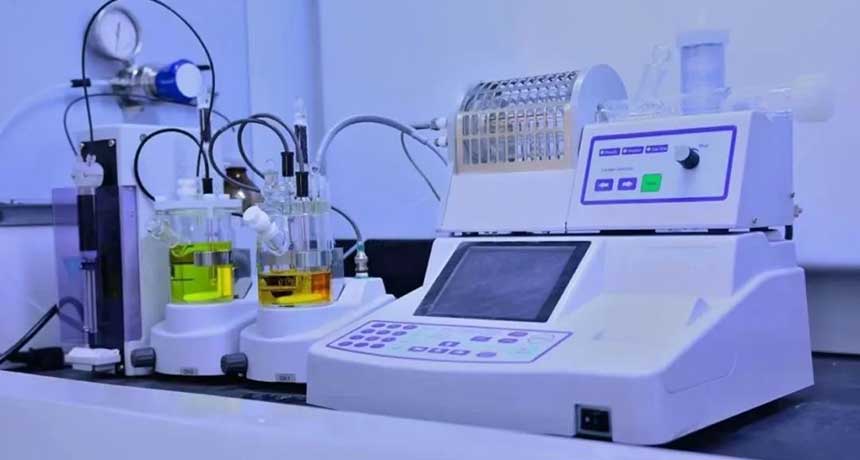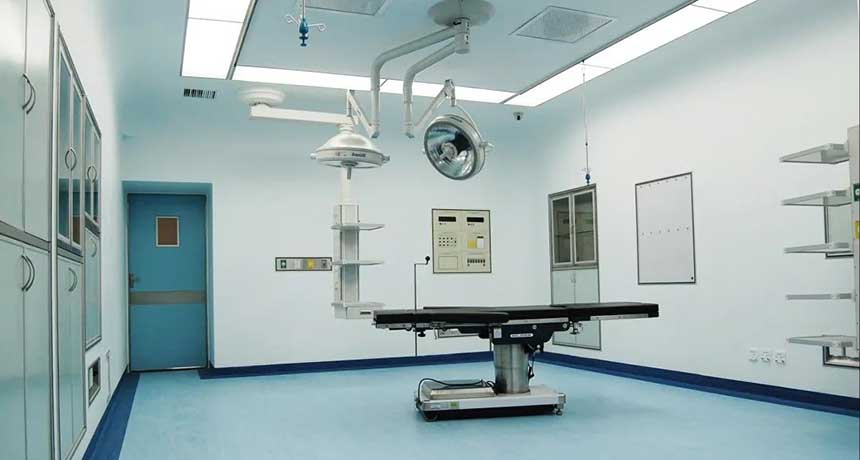In the operating room, the shadowless lamp is a vital piece of equipment, and its presence is essential for light illumination during the operation. The surgical shadowless lamp generally consists of a single or multiple lamp heads, which are fixed on a cantilever. The cantilever is usually connected to a fixed coupler, can rotate around it, and has automatic braking and stopping functions. The handle with disinfection and sterilization properties can be flexibly positioned, which makes it easier for doctors to adjust the position of the light source according to specific conditions during surgery. During the operation, the doctor's head, hands and instruments may cause interfering shadows on the surgical site. Therefore, surgical shadowless lights are needed to help eliminate these shadows and minimize color distortion to avoid interfering with the doctor's judgment. Under normal circumstances, when light shines on an opaque object, a shadow will be produced. The darkest part of the shadow in the middle is called the umbra, and the surrounding parts that gradually become lighter are called the penumbra. When the distance between the light source and the occlusion object is constant, the size of the umbra is related to the illumination angle and the area of the light source. The larger the area of the light source, the more light comes from more directions, and the smaller the umbra is.
When the light source area is large enough, the umbra will disappear completely and the penumbra will be so faint that it is almost invisible. The working principle of shadowless lamp is to reduce the umbra. The shadowless lamp arranges lamps with higher luminous intensity in a circle on the lamp panel. The lights illuminated from all directions in the circular lamp panel increase the area of the light source, and can illuminate the operating table from different angles, ensuring that The doctor's field of view is bright enough without producing an obvious umbra, achieving a shadowless effect, helping doctors clearly distinguish the lesion tissue and allowing the operation to proceed smoothly.
This article will introduce in detail the working principle, characteristics, advantages, application fields and usage precautions of shadowless lights in the operating room.
working principle
The working principle of shadowless lights in operating rooms is mainly based on optical design and advanced lighting technology. That is, when multiple light sources illuminate an object, and the light from some of the light sources is blocked by the object and cannot hit the receiving surface to create a shadow, the light from other light sources will illuminate the shadow area from another angle, thereby weakening and eliminating this area. shadow, eventually forming a shadowless zone. It uses multiple high-brightness light sources and a special optical system to illuminate the surgical area from multiple different angles, reducing or eliminating shadows generated during the surgery. This lighting method can ensure that the surgical area is illuminated with uniform and stable light, allowing doctors to clearly see the details of the surgical area and perform surgical operations accurately. When checking the shadowless lamp of the surgical shadowless lamp, you can take a piece of white paper and place it under the lamp. If there is a curved shadow on the white paper, it means that the shadowless degree of the surgical shadowless lamp is not good.
Surgical shadowless lamps usually consist of single or multiple lamp heads, which are fixed on a cantilever and can move vertically or circularly. The cantilever is usually attached to a fixed connector and can rotate around it. The shadowless lamp adopts a sterile handle for flexible positioning and has automatic braking and parking functions to control its positioning to maintain appropriate space in and around the job site.
Shadowless lamps can be placed at fixed points on the ceiling or wall, or on ceiling tracks. The shadowless lamp suitable for the installation type can be selected according to the specific situation.
Features and Benefits
Reduce shadows: Shadowless lamps can reduce or eliminate shadows during surgery, making the light in the surgical area more uniform, providing doctors with a clear field of vision, and helping to perform surgical operations accurately.
Uniform lighting: The shadowless lamp uses multiple light sources and a special optical design to achieve uniform lighting distribution, ensuring that every corner of the surgical area is fully illuminated.
Adjusting the light: Shadowless lamps usually have a light adjustment function, which can adjust the light according to different stages and requirements of the operation to meet the actual needs of the doctor.
Energy saving and environmental protection: Modern operating room shadowless lights usually use LED light sources, which have the characteristics of high energy efficiency and long life, and can effectively save energy and reduce the impact on the environment.
Application areas
Operating room shadowless lights are mainly used in various operating rooms and operating rooms, including general surgery, cardiac surgery, neurosurgery, etc. It provides doctors with clear and uniform light, which helps improve the accuracy and safety of surgical operations, reduce surgical risks, and improve the success rate of surgery.
Precautions
Regular maintenance: The shadowless lamp in the operating room is one of the key equipment in the operating room. It must be maintained and maintained regularly to check whether the lamps and light sources are normal to ensure the normal operation of the equipment.
Sterilization and disinfection: The shadowless lamp must be sterilized and disinfected frequently to ensure the cleanliness of the surgical environment and the safety of the patient.
Pay attention to operation: When using shadowless lamps, doctors and nurses should pay attention to operating specifications to ensure the correct use and safe operation of the equipment and avoid accidents caused by improper operation.
Improve skills: Medical staff should receive relevant training regularly to improve their skills and knowledge in operating shadowless lamps to ensure the smooth progress of operations and the safety of patients.
To sum up, the operating room shadowless lamp is an indispensable and important equipment in the operating room. By reducing shadows and providing uniform lighting, it provides doctors with a clear field of vision, helps them perform surgical operations, and improves the success rate and safety of operations.







